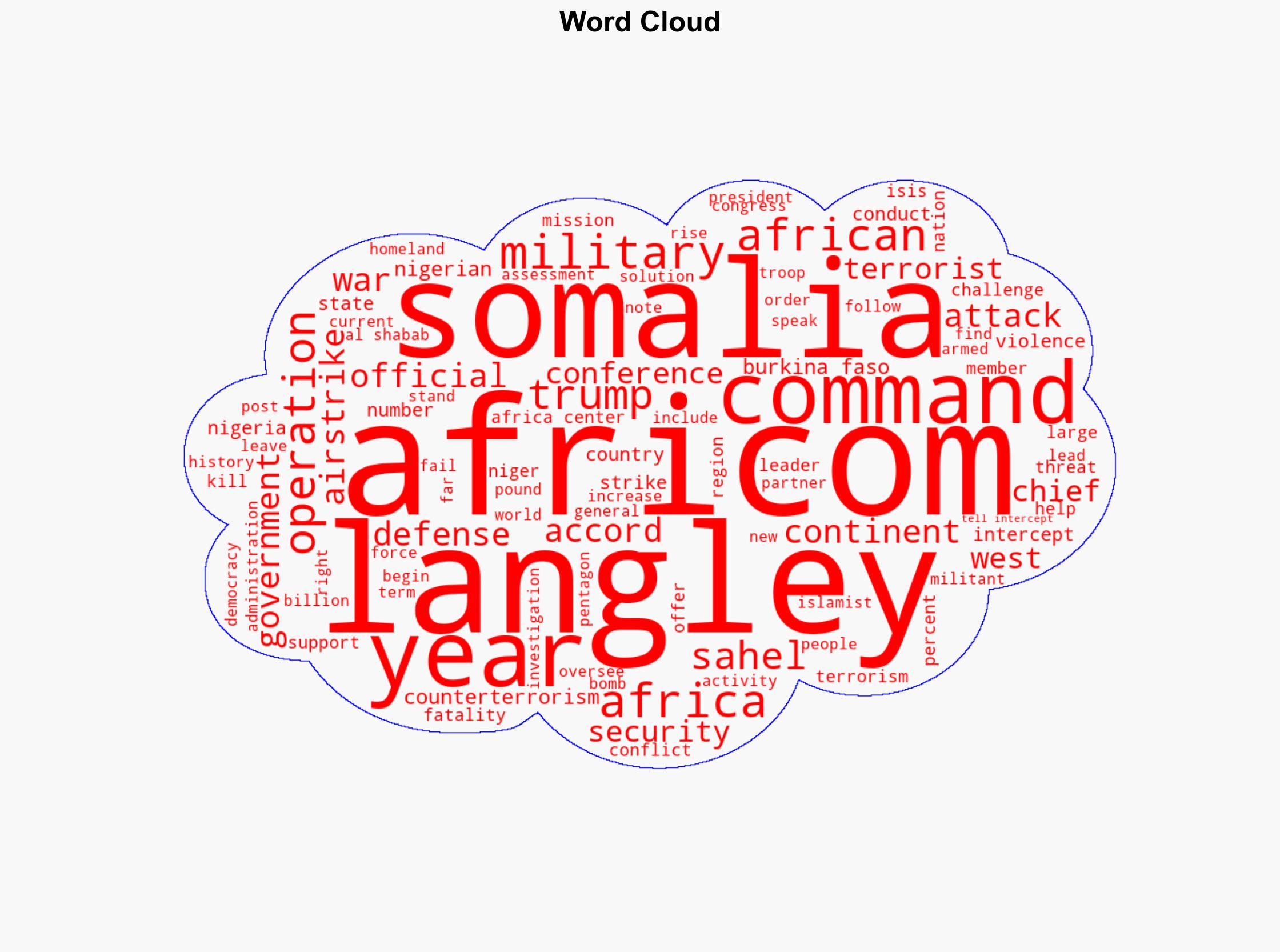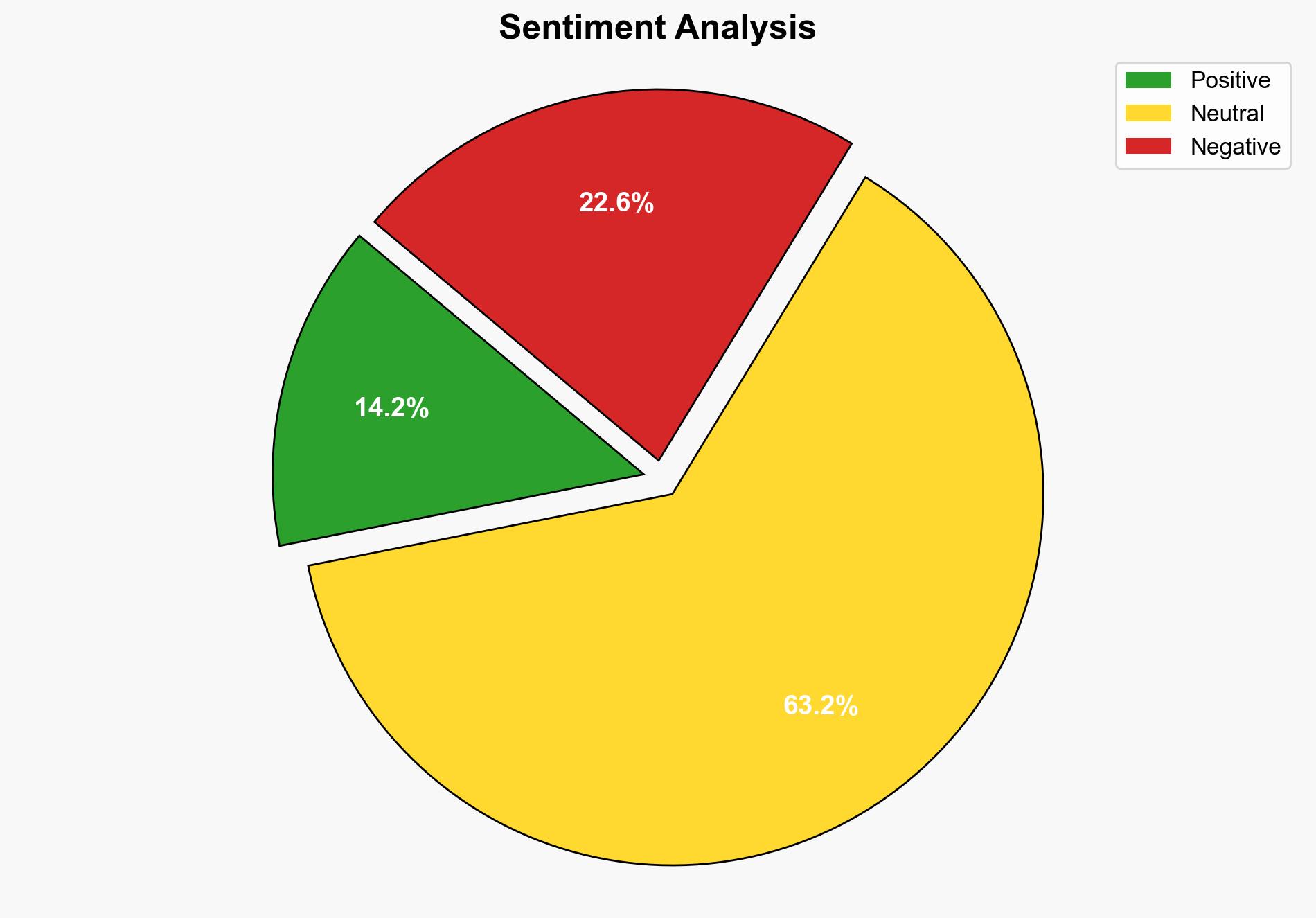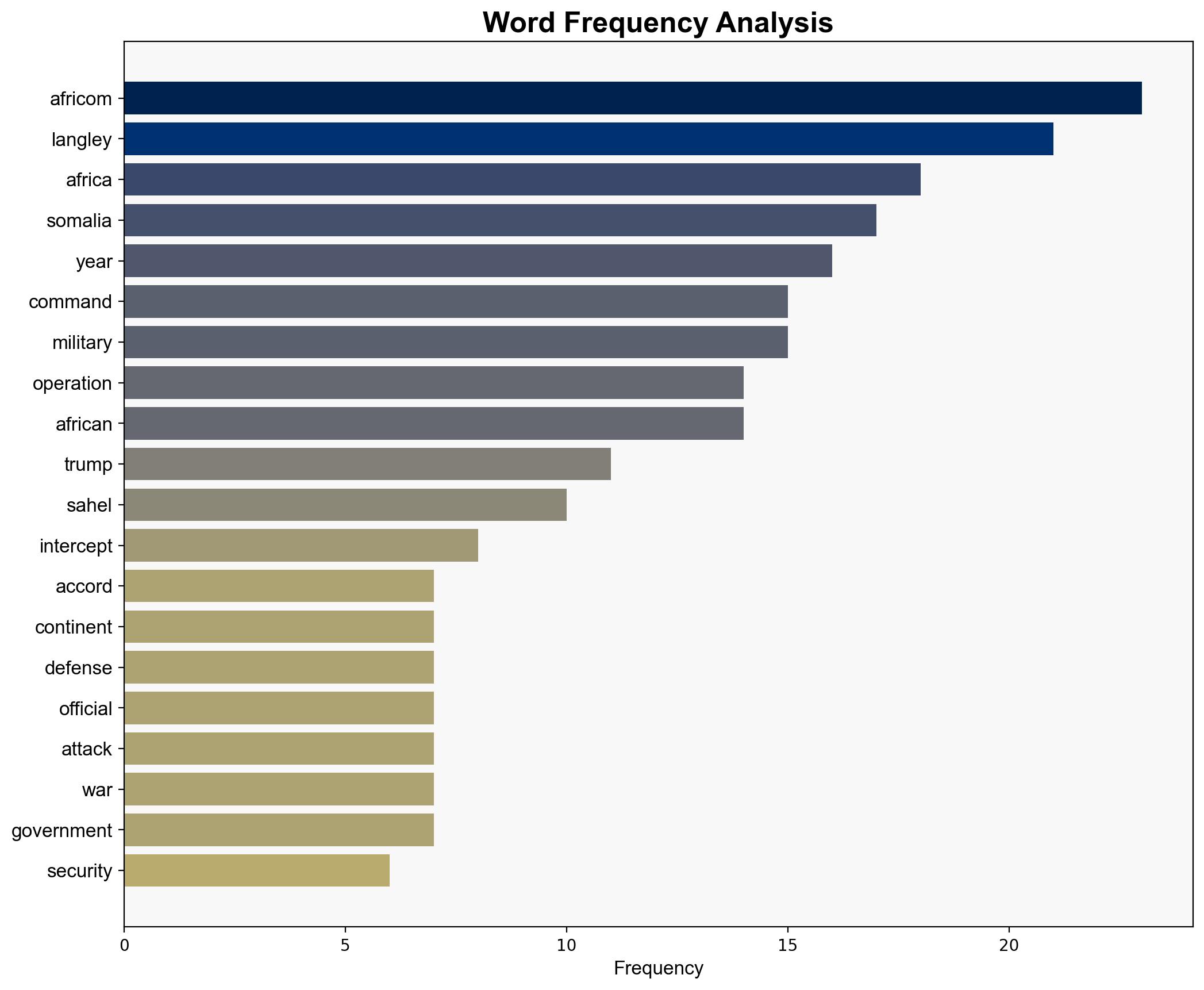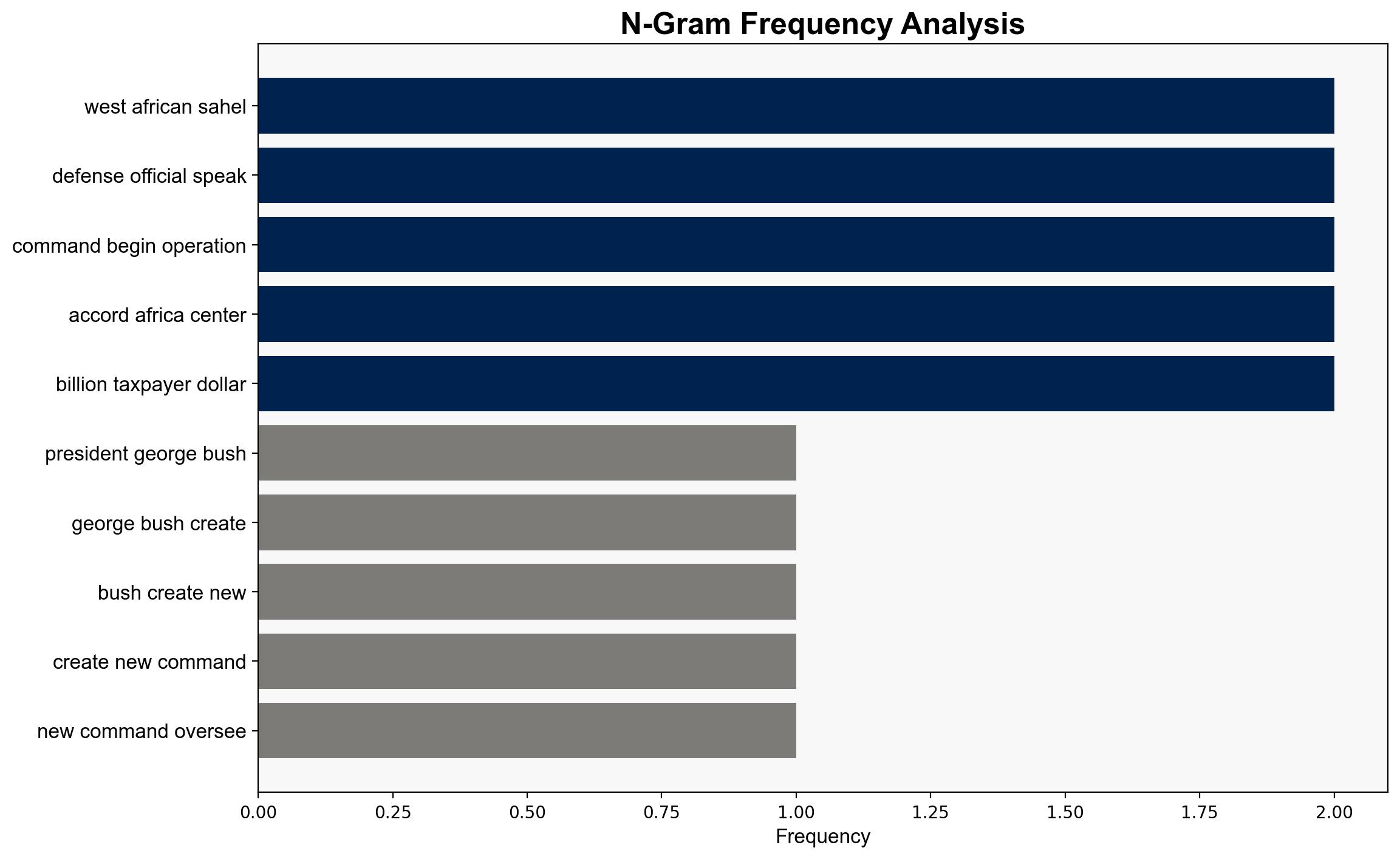Top US General in Africa Paints Grim Picture of US Military Failures in Africa – The Intercept
Published on: 2025-06-08
Intelligence Report: Top US General in Africa Paints Grim Picture of US Military Failures in Africa – The Intercept
1. BLUF (Bottom Line Up Front)
The report highlights significant challenges faced by the United States Africa Command (AFRICOM) in achieving its mission objectives. Despite increased military operations, the security situation in Africa, particularly in the Sahel and Somalia, has deteriorated. The rise in terrorist activities and fatalities underscores the need for a strategic reassessment of US military engagement on the continent. Recommendations include enhancing regional partnerships and reevaluating current military strategies to better address the evolving threat landscape.
2. Detailed Analysis
The following structured analytic techniques have been applied to ensure methodological consistency:
ACH 2.0
The analysis suggests that the intentions of threat actors, such as ISIS and Al-Qaeda affiliates, are to exploit regional instability to expand their influence. AFRICOM’s current strategies may not adequately counter these intentions due to limited regional cooperation and resource constraints.
Indicators Development
Indicators such as increased digital radicalization and cross-border movements suggest heightened operational planning by terrorist groups. Monitoring these indicators can provide early warnings of potential attacks.
Narrative Pattern Analysis
The adaptation of extremist narratives is evident in recruitment efforts across social media platforms, emphasizing the need for counter-narrative strategies to disrupt these recruitment channels.
Network Influence Mapping
Mapping influence relationships reveals that key terrorist networks are leveraging local grievances to strengthen their foothold, necessitating a focus on undermining these networks through targeted interventions.
3. Implications and Strategic Risks
The persistent instability in the Sahel and Somalia poses significant risks to regional and global security. The potential for spillover effects into neighboring regions could exacerbate existing vulnerabilities, leading to broader geopolitical instability. Additionally, the reliance on military solutions without addressing underlying socio-economic issues may lead to further disenchantment and radicalization.
4. Recommendations and Outlook
- Enhance intelligence-sharing and collaborative operations with regional partners to improve situational awareness and response capabilities.
- Invest in socio-economic development programs to address root causes of instability and reduce recruitment into extremist groups.
- Scenario-based projections:
- Best Case: Strengthened regional alliances lead to a significant reduction in terrorist activities.
- Worst Case: Continued instability results in increased terrorist control and influence.
- Most Likely: Incremental improvements in security, but persistent challenges due to complex regional dynamics.
5. Key Individuals and Entities
Michael Langley, Pete Hegseth
6. Thematic Tags
national security threats, cybersecurity, counter-terrorism, regional focus





